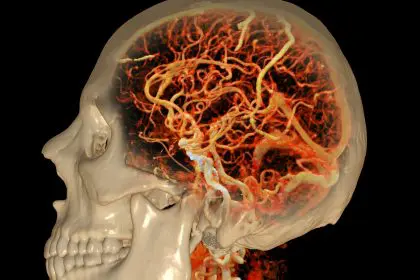The fight against Alzheimer’s disease just got a major breakthrough that could change everything we know about protecting our minds as we age. With over 32 million people worldwide grappling with this devastating condition, compelling evidence is offering hope in the most unexpected place: your local gym.
Scientists have finally cracked the code on exactly how breaking a sweat can literally rewire your brain to ward off memory loss and cognitive decline. The evidence is so compelling that medical experts are calling exercise the closest thing we have to a miracle drug for brain health.
1. Exercise transforms your brain’s immune system
Deep inside your brain, microscopic warriors called microglia work around the clock to protect your neurons from damage. Think of them as your brain’s personal security team, constantly patrolling for threats and cleaning up cellular debris that could lead to Alzheimer’s.
Revolutionary discoveries have revealed that regular physical activity completely transforms these immune cells, supercharging their protective abilities. When you exercise, these microglia cells become more efficient at their jobs, better equipped to fight off the harmful proteins that accumulate in Alzheimer’s disease. It’s like giving your brain’s security team a major upgrade in equipment and training.
These cellular guardians become increasingly vigilant and effective with each workout, creating a stronger defense system against the molecular chaos that characterizes Alzheimer’s disease. The transformation happens at the deepest level, rewiring how these cells respond to threats and maintain brain health.
2. Your brain’s blood vessels get a complete makeover
Medical evidence shows that exercise affects special cells called neurovascular-associated astrocytes. These star-shaped cells act like your brain’s construction crew, maintaining the delicate network of blood vessels that keep your neurons fed with oxygen and nutrients.
Exercise doesn’t just make these cells work harder – it fundamentally changes their structure and function. Physical activity triggers a complete renovation of your brain’s vascular system, ensuring that every corner of your mind gets the blood flow it needs to stay healthy and sharp.
This vascular makeover is particularly crucial in the hippocampus, the brain region most vulnerable to Alzheimer’s damage. By keeping this memory center well-nourished, exercise creates a fortress against cognitive decline. The improved blood flow delivers essential nutrients while efficiently removing waste products that could damage delicate brain tissue.
The transformation extends beyond simple circulation improvements. Exercise actually rebuilds the architectural framework of brain blood vessels, creating more robust pathways for nutrient delivery and waste removal. This enhanced infrastructure provides long-term protection against the vascular problems often associated with cognitive decline.
3. A master gene switches on brain regeneration
Perhaps the most exciting evidence involves a metabolic gene that acts like a master controller for neurogenesis – the brain’s ability to create brand new neurons throughout your lifetime. This genetic switch, known as ATPIF1, becomes activated through regular physical activity.
For decades, people believed that adults couldn’t grow new brain cells. Medical evidence now shows that exercise activates this crucial gene, triggering the birth of fresh neurons in areas critical for memory and learning.
Every time you lace up your sneakers and get moving, you’re literally growing new brain cells. These newly minted neurons integrate into existing networks, strengthening your cognitive reserves and building resilience against age-related decline.
The process works like a cellular renewal program, constantly refreshing your brain’s capacity for learning and memory formation. These new neurons don’t just replace damaged ones – they actually enhance existing brain networks, creating redundancy that protects against future cognitive challenges.
4. Inflammation gets dialed down to protective levels
Chronic inflammation in the brain is like a slow-burning fire that gradually destroys neurons and contributes to Alzheimer’s development. Exercise acts like a sophisticated fire department, not by eliminating inflammation entirely, but by fine-tuning it to optimal levels.
The newly transformed microglia and astrocytes work together to regulate inflammatory responses, keeping them at just the right intensity to protect the brain without causing collateral damage. This delicate balance is crucial for long-term cognitive health.
The inflammatory regulation achieved through exercise creates an environment where healthy neurons can thrive while damaged cells are efficiently cleared away. It’s a precision operation that maintains just enough inflammation to support healing and protection while preventing the destructive cascade that leads to neurodegeneration.
This inflammatory fine-tuning extends throughout the entire brain, creating a more stable environment for cognitive function. The balanced inflammatory response supports brain plasticity and resilience, key factors in maintaining mental sharpness as we age.
5. Memory circuits get reinforced and protected
The final piece of the puzzle involves the strengthening of neural pathways responsible for forming and retrieving memories. Exercise doesn’t just create new neurons – it helps them connect more effectively with existing brain networks.
These reinforced memory circuits become like superhighways for information processing, allowing thoughts and memories to travel more efficiently throughout the brain. When Alzheimer’s-related damage does occur, these robust pathways provide alternative routes for information to travel, maintaining cognitive function longer.
The strengthening process works at multiple levels, from individual synapses to large-scale brain networks. Exercise promotes the growth of dendritic branches, the tree-like extensions that allow neurons to communicate with each other. More connections mean better information flow and greater cognitive reserve.
The cellular transformation happening in your brain
The changes that occur in your brain during exercise are nothing short of remarkable. At the cellular level, physical activity triggers a cascade of beneficial changes that protect against cognitive decline and enhance mental performance.
Your brain cells literally rewire themselves in response to regular movement, becoming more resilient and better connected. This cellular renovation project continues long after your workout ends, with benefits accumulating over time to create a more robust and protected brain.
The process involves complex molecular machinery that responds to the increased blood flow, oxygen delivery, and chemical signals generated during physical activity. These cellular changes create a brain environment optimized for learning, memory formation, and protection against age-related decline.
What this means for your daily routine
The implications of this evidence extend far beyond the laboratory. Unlike expensive medications or complex medical procedures, the brain-protecting benefits of exercise are available to virtually everyone, regardless of age or fitness level.
These findings suggest that even moderate physical activity can trigger protective changes. You don’t need to become a marathon runner to shield your brain from Alzheimer’s. Simple activities like brisk walking, swimming, or dancing can activate the cellular mechanisms that keep your mind sharp.
The key is consistency rather than intensity. Regular, sustained physical activity appears to be more beneficial than occasional intense workouts. This makes sense given that the cellular changes develop over time with repeated exercise sessions.
Starting an exercise routine doesn’t require expensive equipment or gym memberships. Walking for 30 minutes daily, taking the stairs instead of elevators, or participating in recreational sports can all contribute to brain health. The important thing is finding activities you enjoy and can maintain long-term.
Beyond movement: building brain resilience
While exercise emerges as a powerful tool in the fight against Alzheimer’s, medical evidence also highlights the importance of a comprehensive approach to brain health. The cellular changes triggered by physical activity work best when combined with other healthy lifestyle choices.
Mental stimulation through challenging activities like learning new skills or solving puzzles complements the neurogenesis promoted by exercise. A nutrient-rich diet provides the building blocks for the new neurons and connections that physical activity helps create.
Stress management through techniques like meditation or yoga works synergistically with exercise to optimize the inflammatory response that protects brain health. Quality sleep allows the brain to consolidate the benefits of physical activity and clear away metabolic waste that could contribute to cognitive decline.
Social engagement and meaningful relationships also play crucial roles in brain health, working alongside exercise to create a comprehensive protective strategy against cognitive decline.
The power of prevention
This compelling evidence represents a fundamental shift in how we approach brain health and Alzheimer’s prevention. Rather than waiting for symptoms to appear, we now understand that proactive lifestyle choices can literally reshape our brains to resist cognitive decline.
The cellular mechanisms activated by exercise provide a biological foundation for optimism about aging and cognitive health. Every workout becomes an investment in your brain’s future, building reserves that can protect against the challenges of growing older.
This preventive approach empowers individuals to take control of their cognitive destiny. While genetic factors certainly play a role in Alzheimer’s risk, lifestyle choices like regular exercise offer powerful tools for influencing that risk in positive ways.
Your brain’s fountain of youth
The evidence is clear: your next workout isn’t just building muscle or burning calories – it’s literally rewiring your brain to resist one of the most feared diseases of our time. Every step, every movement, every drop of sweat is an investment in your cognitive future.
The path to protecting your mind from Alzheimer’s disease might be simpler than anyone imagined. It starts with a single step, and it’s available to everyone willing to make movement a priority in their daily lives.
Your brain has an remarkable capacity for renewal and protection, but it needs your help to unlock these abilities. Through regular physical activity, you can activate the cellular mechanisms that guard against cognitive decline and promote lifelong mental sharpness.
The choice is yours, and the time to start is now. Your future self will thank you for every step you take today.
















